OwlOCR Review and its Alternative
Optical Character Recognition (OCR) technology is vital for converting images and scanned documents into editable text. Among the various solutions available, OwlOCR stands out as a noteworthy option, specifically designed to simplify the extraction of text from images. This article will provide an in-depth look at OwlOCR's features, its limitations, and the reasons users may seek alternatives. Additionally, we will explore PDNob Image Translator, an effective alternative that offers significant advantages over OwlOCR, including broader compatibility and enhanced features.
Part 1: OwlOCR Review
OwlOCR is primarily used for digitizing documents, enabling users to convert various types of files into editable text. Its key use cases include:
1.Business Applications: Professionals can use OwlOCR to convert invoices, contracts, and reports into digital formats, facilitating easy editing and archiving.
2.Academic Use: Students and researchers often scan and convert printed materials for note-taking or citation purposes.
Personal Use: Individuals can digitize personal documents, such as receipts and handwritten notes, making them searchable and easier to manage.
What is OwlOCR?
OwlOCR is an OCR software designed to convert images, PDFs, and scanned documents into editable and searchable text. Leveraging advanced algorithms, OwlOCR can recognize text in multiple languages and supports various image formats, making it a versatile tool for both personal and professional use. Its user-friendly interface allows users to easily upload files, process them, and retrieve the text with minimal effort, catering to both tech-savvy individuals and novices alike.

OwlOCR Limitations
While OwlOCR offers a variety of features that cater to users needing OCR capabilities, it also presents several notable limitations that may impact its overall effectiveness and user experience.
Platform Restriction:One of the most significant drawbacks of OwlOCR is its exclusive availability on macOS. This limitation restricts accessibility for a substantial number of potential users who rely on Windows or Linux operating systems. As a result, those using different platforms are forced to seek alternative OCR solutions, limiting the app’s overall user base and market reach.
Limited Language Support:Although OwlOCR pro supports multiple languages, the accuracy of text recognition can vary significantly depending on the specific language and font style. For instance, users may experience challenges when dealing with complex characters or non-Latin scripts, leading to potential errors in the extracted text. This inconsistency can be particularly frustrating for users working with diverse linguistic content.
File Size Restrictions:Users may also encounter limitations regarding the maximum file size they can upload to OwlOCR. This constraint can hinder workflows, especially when dealing with larger documents or images that contain substantial amounts of text. Users may find themselves needing to split documents into smaller sections, which can be both inconvenient and time-consuming.
Lack of Batch Processing:Another critical limitation is the absence of batch processing functionality. OwlOCR requires users to upload files one at a time, which can be particularly inefficient for those who need to process multiple images or documents. This lack of efficiency can significantly slow down productivity, especially for professionals who frequently work with large volumes of text.
Subscription Costs:Finally, the pricing model for OwlOCR may not be suitable for all users. While a subscription may be cost-effective for frequent users, those who only need OCR capabilities occasionally might find the subscription fees unjustifiable. This pricing structure can discourage potential users from adopting the software, limiting its appeal to a broader audience.
Why We Need an OwlOCR Alternative?
Despite its advantages, the limitations of OwlOCR may lead users to seek alternatives. For instance, users on Windows or those requiring batch processing capabilities may find OwlOCR insufficient for their needs. Additionally, the cost associated with a subscription might deter casual users who prefer one-time purchases or free solutions. Exploring alternatives can provide users with more options tailored to their specific requirements.
Steps to use- Download the free app OwlOCR from the Mac App Store.
- Open the app and click on the ‘Screenshot’ option at the top of the interface.
- Use the crosshair tool to drag and select the area of the screen containing the text you want to capture.

- After capturing the screenshot, OwlOCR will automatically display the recognized text.
- Copy the extracted text to your clipboard for further use.
Part 2: OwlOCR Alternative - PDNob Image Translator
For users seeking a robust alternative to OwlOCR, PDNob Image Translator stands out as an excellent choice. This tool not only provides OCR capabilities but also enhances image translation, making it ideal for users who often deal with multilingual content.
What is PDNob Image Translator?
PDNob Image Translator is an advanced and versatile tool designed to help users effortlessly translate text from images. This powerful application supports a wide range of languages, making it suitable for users across different linguistic backgrounds. With its high accuracy in both text recognition and translation, PDNob Image Translator ensures that the original meaning and nuances of the text are preserved, providing reliable results. Available for both macOS and Windows platforms, PDNob Image Translator significantly expands its user base, addressing a major limitation of OwlOCR, which is confined to macOS.
Convert image to text free
Advantages of PDNob Image Translator
- Cross-Platform Compatibility: Unlike OwlOCR, which is limited to macOS, PDNob Image Translator is available on both Windows and macOS. This flexibility allows users to work on their preferred operating systems without restrictions.
- Enhanced Language Support: PDNob Image Translator supports a broader range of languages and offers improved accuracy, making it an excellent option for users working with diverse linguistic materials.
- Batch Processing: PDNob Image Translator allows users to upload multiple files at once, streamlining the workflow significantly. This feature is particularly beneficial for businesses or individuals dealing with large volumes of documents.
- User-Friendly Interface: The intuitive design of PDNob Image Translator ensures that users can navigate the software effortlessly, making it accessible for all skill levels.
- Additional Features: Beyond OCR, PDNob Image Translator includes translation capabilities, enabling users to not only extract text but also translate it into their desired language seamlessly. This feature is especially useful for professionals and students working with foreign languages.
Use Cases for PDNob Image Translator
- Travelers: For travelers, PDNob Image Translator can translate signs, menus, and other printed materials in real-time, making it an essential companion.
- Researchers and Students: Those who frequently work with foreign literature can benefit from PDNob Image Translator ability to extract and translate text, facilitating their research efforts.
- Business Professionals: Companies operating internationally can use PDNob Image Translator to process and translate documents, ensuring effective communication across language barriers.
- Educators: Teachers and students can utilize PDNob Image Translator for translating educational materials, providing diverse resources to enhance learning experiences.
- Personal Use: Users can digitize and translate personal documents, receipts, and notes, ensuring they remain organized and accessible in multiple languages.
Part 3: Comparison: OwlOCR vs. PDNob Image Translator
When evaluating OwlOCR and PDNob Image Translator, several factors come into play that highlight the strengths of each tool, ultimately positioning PDNob Image Translator as the superior choice for users needing effective OCR and translation solutions.
Platform CompatibilityOwlOCR is limited to macOS, which restricts its user base significantly, leaving Windows and Linux users without access. In contrast, PDNob Image Translator is designed for cross-platform compatibility, functioning seamlessly on both macOS and Windows. This versatility allows PDNob Image Translator to cater to a larger audience, making it the more practical option for users who switch between different operating systems.
Features and FunctionalityWhile OwlOCR effectively extracts text from images and boasts a straightforward interface, it falls short in terms of advanced functionality. Notably, it lacks batch processing capabilities, requiring users to upload documents one by one, which can be time-consuming. In contrast, PDNob Image Translator not only excels in OCR but also integrates powerful translation features, allowing users to convert text into multiple languages instantly. This added functionality makes PDNob Image Translator an essential tool for individuals dealing with multilingual content, such as travelers, researchers, and global businesses.
Pricing and LicensingWhen it comes to pricing, OwlOCR typically employs a subscription model that may not suit casual users or those who only require OCR occasionally. PDNob Image Translator, however, often provides various pricing options, including one-time purchases and subscriptions, making it accessible for different budgets and usage patterns.
Which is the best tool?In summary, while both OwlOCR and PDNob Image Translator offer valuable OCR capabilities, PDNob Image Translator stands out with its superior cross-platform compatibility, advanced features, and flexible pricing. Users seeking a comprehensive solution that includes both text extraction and translation will find PDNob Image Translator to be the best choice, addressing a wider range of needs and ensuring a more efficient workflow.
Part 4: Conclusion
While OwlOCR is a capable tool for OCR tasks, its limitations may lead users to seek alternatives. PDNob Image Translator emerges as a superior option, offering cross-platform compatibility, enhanced language support, and advanced features such as translation and batch processing. In summary, if you find OwlOCR lacking, consider transitioning to PDNob Image Translator for a more versatile and user-friendly experience in both OCR and translation. This shift can significantly enhance your productivity and streamline your document management processes.
PDNob Image Translator
Image to Text Converter enables you to accurately extract text from all types of images without storing any picture files into the program.







